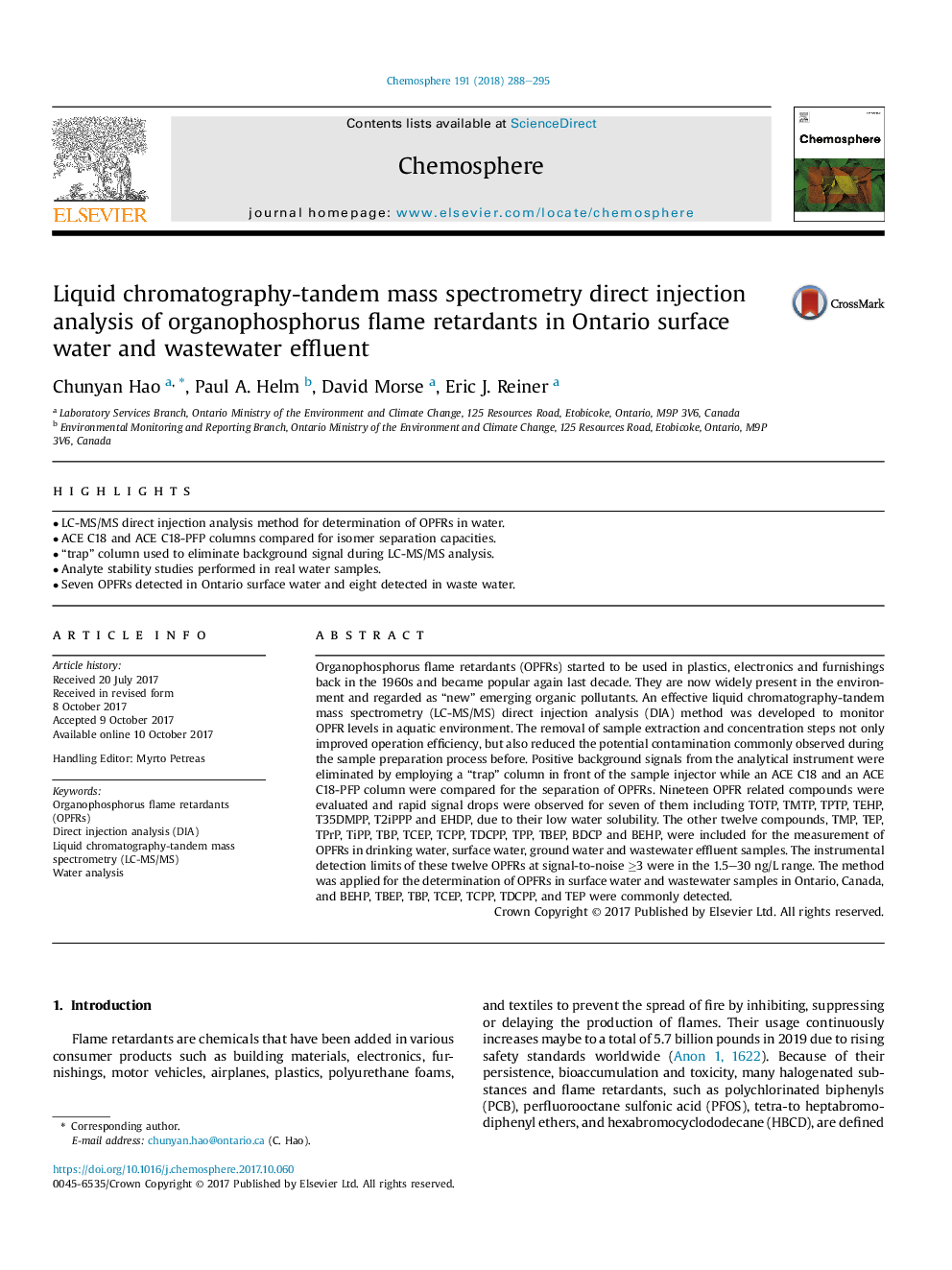| کد مقاله | کد نشریه | سال انتشار | مقاله انگلیسی | نسخه تمام متن |
|---|---|---|---|---|
| 5745713 | 1618780 | 2018 | 8 صفحه PDF | دانلود رایگان |
- LC-MS/MS direct injection analysis method for determination of OPFRs in water.
- ACE C18 and ACE C18-PFP columns compared for isomer separation capacities.
- “trap” column used to eliminate background signal during LC-MS/MS analysis.
- Analyte stability studies performed in real water samples.
- Seven OPFRs detected in Ontario surface water and eight detected in waste water.
Organophosphorus flame retardants (OPFRs) started to be used in plastics, electronics and furnishings back in the 1960s and became popular again last decade. They are now widely present in the environment and regarded as “new” emerging organic pollutants. An effective liquid chromatography-tandem mass spectrometry (LC-MS/MS) direct injection analysis (DIA) method was developed to monitor OPFR levels in aquatic environment. The removal of sample extraction and concentration steps not only improved operation efficiency, but also reduced the potential contamination commonly observed during the sample preparation process before. Positive background signals from the analytical instrument were eliminated by employing a “trap” column in front of the sample injector while an ACE C18 and an ACE C18-PFP column were compared for the separation of OPFRs. Nineteen OPFR related compounds were evaluated and rapid signal drops were observed for seven of them including TOTP, TMTP, TPTP, TEHP, T35DMPP, T2iPPP and EHDP, due to their low water solubility. The other twelve compounds, TMP, TEP, TPrP, TiPP, TBP, TCEP, TCPP, TDCPP, TPP, TBEP, BDCP and BEHP, were included for the measurement of OPFRs in drinking water, surface water, ground water and wastewater effluent samples. The instrumental detection limits of these twelve OPFRs at signal-to-noise â¥3 were in the 1.5-30 ng/L range. The method was applied for the determination of OPFRs in surface water and wastewater samples in Ontario, Canada, and BEHP, TBEP, TBP, TCEP, TCPP, TDCPP, and TEP were commonly detected.
Journal: Chemosphere - Volume 191, January 2018, Pages 288-295
